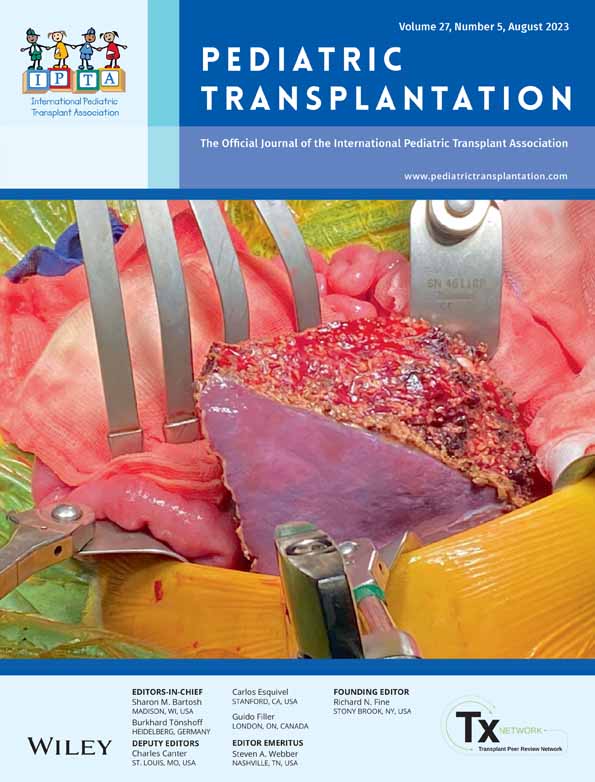Anterior hepatic resection: A simple and safe technique for reducing the antero-posterior diameter of the liver graft for small pediatric recipients
Abstract
Background
The techniques involved in neonatal and infantile transplantation require approaches that can sculpt a left lateral segment (LLS) to the right shape and size and avoid large-for-size syndrome. The aim of this article is to describe the anterior hepatic resection (AHR) of the LLS in pediatric LDLT.
Methods
A retrospective anatomical study of preoperative image studies, description of the technique for AHR, and short-term results.
Results
The AHR was performed in eight cases. All donors were male, with average age, BW, and BMI of 28.3 ± 5.9 years, 74.2 ± 9.3 kg, and 24.3 ± 2.6 kg/m2, respectively. Donors were discharged at an average of 3.6 ± 0.8 days. The median recipient age and BW at transplantation were 6.9 (2.7 to 11) months and 5.9 (3.9 to 8) kg, respectively, and the recipient-to-donor body weight ratio (RDBW) was <0.1 in all but one case. The mean percentage reduction in graft weight and in the antero-posterior diameter were 33.2% ± 5.5% and 38.3% ± 12.6%, respectively. The average (SD) GRWR was 4.8% ± 1.7% before all the resections and 3.5% ± 1.0% after the procedures. Seven patients were primarily closed.
Conclusion
After LLS resection, a nonanatomical anterior resection of the LLS was accomplished without hilar vascular dissection to segments II/III. The final liver graft allowed primary abdominal wall closure in all but one patient, with meaningful adjustments in GRWR. AHR proved to be simple, safe, reproducible, and effective in the presented case series.
CONFLICT OF INTEREST STATEMENT
There was no external funding for this work. The authors do not have any commercial or financial connections that would pose a conflict of interest to the findings of this article.
Open Research
DATA AVAILABILITY STATEMENT
The data that support the findings of this study are available on request from the corresponding author. The data are not publicly available due to privacy or ethical restrictions.




